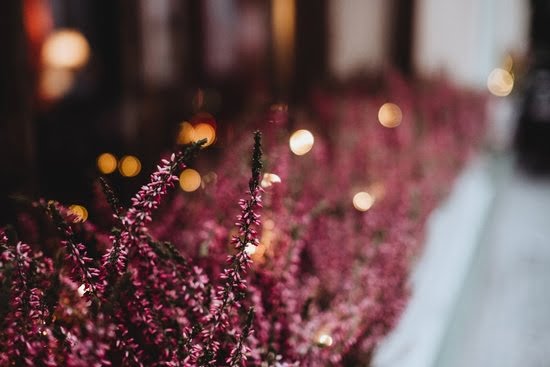Landscape design ideas for square spaces are essential to make the most out of limited area. A well-designed landscape can greatly enhance the aesthetic appeal of a square space, making it both functional and visually pleasing.
Understanding the dimensions and layout of the area is crucial, along with considering factors such as sunlight, soil type, and existing features. This article will delve into various elements of landscape design for square spaces, including practical design elements, plant selection and placement, creating visual interest, and maintenance tips.
When it comes to designing a square space, particularly in urban or suburban areas where land is limited, it’s important to optimize every inch of space for both functionality and beauty. Through careful planning and thoughtful integration of key design elements, a small square area can be transformed into a stunning outdoor oasis. Ultimately, the goal is to create a landscape that not only complements the surrounding architecture but also provides an inviting environment for relaxation and enjoyment.
In this article, we will explore the various aspects of landscape design for square spaces, from assessing the space and selecting the right plants to creating depth and perspective through clever design techniques. Additionally, we’ll provide case studies and inspiration to showcase successful examples of innovative landscape designs specifically tailored for small square areas.
Whether you have a courtyard garden or a compact backyard, this comprehensive guide will offer practical tips and creativity to help you make the most out of your square space.
Assessing the Space
When it comes to landscape design ideas for square spaces, one of the first crucial steps is to thoroughly assess the area in question. Understanding the dimensions and layout of the square space is essential in order to make informed design decisions. Consider creating a list of measurements and taking note of any existing features that may influence the overall design plan.
Factors such as sunlight exposure, soil type, and existing elements like trees or structures should also be taken into account when assessing the space. These considerations will play a significant role in determining which plants will thrive in the area and how to maximize the use of space effectively.
To help with this assessment process, consider creating a checklist of key factors to evaluate. This may include items such as:
- Measurement of square footage
- Analysis of sunlight patterns throughout the day
- Examination of soil quality
- Identifying any obstacles or existing features that must be worked around
Taking the time to conduct a thorough assessment of your square space will provide a strong foundation for successful landscape design ideas, ensuring that your plans are both functional and aesthetically pleasing.
Functional Design Elements
When it comes to designing a landscape for a square area, practicality is key. Incorporating functional design elements is essential in maximizing the use of space and creating a versatile outdoor environment.
Pathways and Seating Areas
One of the first considerations in creating a functional landscape design for a square space is the layout of pathways and seating areas. Pathways should be strategically placed to provide access to different areas of the square while also allowing for efficient circulation. Additionally, incorporating seating areas within the landscape provides opportunities for relaxation and socialization, enhancing the overall usability of the space.
Outdoor Dining Spaces
For those looking to create an inviting outdoor dining experience in a small square area, integrating designated dining spaces is crucial. This can be achieved through the use of compact dining sets, built-in benches, or even multi-purpose furniture that can serve as both seating and dining surfaces. By carefully planning the placement of these elements, it’s possible to create an intimate dining area without compromising on functionality.
Maximizing Use of Space
In a limited square area, every inch counts. Therefore, when implementing functional design elements, it’s important to maximize the use of space creatively. This can involve incorporating vertical gardening solutions, such as wall-mounted planters or trellises, as well as utilizing multi-level landscaping features such as raised beds or terraced gardens. By taking advantage of vertical and horizontal space effectively, it’s possible to create a highly functional and visually appealing landscape in even the smallest squares.
By prioritizing functional design elements in a square landscape, designers and homeowners alike can ensure that their outdoor spaces are not only aesthetically pleasing but also practical and conducive to various activities. From pathways and seating areas to outdoor dining spaces, there are numerous opportunities for creativity and innovation when designing small square landscapes.
Plant Selection and Placement
When it comes to landscape design ideas for square spaces, selecting the right plants and placing them strategically is crucial to maximizing the aesthetic and functionality of the area. Here are some tips for choosing the best plants and optimizing their placement in a square landscape:
- Consider the dimensions of the space: Take into account the size of the square area when choosing plants. Opt for compact varieties that won’t overpower the space, but still provide visual interest.
- Assess sunlight and soil conditions: Different plants have varying sunlight and soil requirements. Make sure to select plants that thrive in the specific conditions of your square landscape to ensure their healthy growth.
- Utilize vertical gardening and raised beds: In a limited square space, vertical gardening can be a game-changer. Consider using trellises or vertical planters to add greenery without sacrificing precious square footage. Raised beds can also provide a structured and organized way to display plants in a small area.
In terms of placement, strategic positioning of plants can create an illusion of depth and perspective in a square landscape. By grouping taller plants at the back and layering with shorter ones in front, you can visually expand the area. Additionally, utilizing various textures and colors in plant selections can enhance visual interest in a small, square space.
For those looking to add variety to their square landscape, consider incorporating edibles such as herbs or vegetables into the design. Placing these functional elements alongside ornamental plants not only adds practicality but also contributes to the overall charm of the space.
Lastly, make sure to maintain your chosen plants properly by regularly watering, fertilizing, and pruning as needed. This not only keeps your square landscape looking its best but also promotes sustainability by ensuring that your chosen greenery continues to thrive for years to come. By incorporating these plant selection and placement strategies into your square landscape design, you can create an inviting outdoor space that maximizes both beauty and functionality.
Focal Points and Visual Interest
When designing a landscape for small square spaces, it is crucial to incorporate focal points and visual interest to create an appealing and dynamic environment. One way to achieve this is by incorporating eye-catching features such as sculptures, water features, or unique planting arrangements. These elements draw attention and add personality to the space, making it more inviting and visually stimulating for those who experience it.
Another important aspect of creating visual interest in a small square landscape is through the use of color and texture. By carefully selecting a variety of plants with different colors, shapes, and textures, you can create depth and dimension within the limited area. Additionally, using contrasting foliage and flower colors can make a small square landscape feel more vibrant and lively.
To further enhance the visual appeal of a small square landscape, consider implementing vertical gardening techniques. Utilizing trellises, hanging planters, or climbing vines can add height and visual interest to an otherwise flat space. Vertical elements not only maximize the use of space but also draw the eye upward, creating the illusion of a larger area.
Incorporating these focal points, visual interest elements, and vertical gardening techniques into your small square landscape design will elevate its aesthetic appeal while maximizing its potential within limited dimensions.
| Landscape Design Ideas Square | Visual Interest Elements |
|---|---|
| Incorporate eye-catching features like sculptures or water features | Create dimension through varied color, texture, and plant selection |
| Utilize vertical gardening techniques to add height | Raise visual interest by adding trellises or climbing vines |
Creating Depth and Perspective
When designing a landscape for a square space, creating the illusion of depth and perspective is essential to avoid a cramped or crowded feel. There are several techniques that can be employed to visually expand the area and make it more inviting.
Utilizing Hardscaping and Plant Placement
One effective way to create depth in a small, square landscape is through the strategic use of hardscaping elements such as pathways, retaining walls, and focal points. By incorporating elements that lead the eye into the distance, the perceived size of the space can be enlarged.
Additionally, careful placement of plants can further enhance this effect. The use of taller plants at the back of the square area and gradually decreasing heights towards the front can add layers and depth to the design.
Optical Illusions and Design Tricks
Another approach to creating depth in a small square landscape is through optical illusions and design tricks. For example, using diagonal lines in pathways or garden beds can make a space appear larger than it actually is. Similarly, utilizing color gradients from lighter to darker tones can give the impression of an extended vista within the confined square area.
Understanding Scale and Proportion
Scale and proportion are crucial factors when trying to establish depth in a small square landscape. By carefully choosing appropriately sized features such as furniture, sculptures, or planters, it is possible to create visual interest that leads the eye throughout the space rather than allowing it to stay fixed on one particular aspect. This approach helps to mitigate any feelings of confinement while maximizing the sense of depth and perspective within a limited area.
By implementing these techniques for creating depth and perspective in square landscape designs, it is possible to transform compact spaces into visually interesting and inviting environments that feel larger than they actually are. These principles demonstrate how thoughtful design choices have the power to redefine how we perceive even small squares areas with innovative landscaping strategies.
Maintenance and Sustainability
Maintenance is an essential aspect of any landscape design, and it becomes even more crucial when dealing with a square space. Proper maintenance not only keeps the area looking its best but also ensures the longevity of the design elements. Sustainability is also a key consideration, especially in small areas where resources are limited. In this section, we will discuss tips for maintaining and sustaining a small square landscape.
One important factor to consider in maintenance and sustainability is water conservation. In a small square space, every drop of water counts, so incorporating water-efficient irrigation systems and drought-tolerant plants is crucial. Additionally, using mulch in planting beds helps retain soil moisture and reduce the need for frequent watering.
Another maintenance aspect to consider is regular pruning and shaping of plants to keep them looking neat and well-maintained. Since a small square landscape can quickly look overgrown or unkempt, proper plant care is essential to maintain a polished appearance.
In terms of sustainability, incorporating native plants into the design not only promotes biodiversity but also reduces the need for excessive fertilizers or pesticides. Utilizing organic fertilizers and opting for natural pest control methods further contributes to a sustainable approach in maintaining the landscape.
| Maintenance Tips | Sustainability Practices |
|---|---|
| Regular pruning and shaping | Incorporating native plants |
| Water-efficient irrigation systems | Using organic fertilizers |
| Utilizing mulch for moisture retention | Natural pest control methods |
Case Studies and Inspiration
In conclusion, the design of a square landscape is an essential aspect of creating an aesthetically pleasing and functional outdoor space. As discussed in this article, carefully assessing the dimensions and layout of the square area is crucial for planning an effective landscape design. Factors such as sunlight exposure, soil type, and existing features must be considered to ensure that the chosen design elements and plant selections thrive in the space.
The incorporation of functional design elements like pathways, seating areas, and outdoor dining spaces is vital for maximizing the use of space in a square area. Furthermore, selecting the right plants and utilizing vertical gardening and raised beds can optimize square footage, adding depth and visual interest to the landscape.
Creating focal points with eye-catching features such as sculptures or water features, as well as using techniques to create depth and perspective through hardscaping and plant placement, are essential for making a small square landscape visually appealing. Additionally, maintenance and sustainability practices should be implemented to keep the landscape looking its best while conserving resources.
Overall, by drawing inspiration from case studies showcasing successful square landscape designs and innovative ideas, homeowners and landscape designers alike can develop unique and creative solutions tailored to their specific square spaces. With thoughtful planning and attention to detail, even small square landscapes can be transformed into stunning outdoor environments that enhance property value and quality of life.
Frequently Asked Questions
How Do I Plan a Landscape Layout?
Planning a landscape layout involves assessing your outdoor space, determining the purpose of the area, and considering factors such as sunlight, soil type, and climate. Start by sketching out a rough design, considering elements like plants, walkways, focal points, and seating areas. It’s important to also consider maintenance requirements and potential future growth of plants.
How Do I Create a Landscape Layout?
Creating a landscape layout involves implementing the plan you’ve developed. This can involve tasks like grading the land, planting trees and shrubs, installing hardscaping elements like pathways or retaining walls, and ensuring proper irrigation. Pay attention to maintaining balance and harmony in the design while also considering the practical aspects such as drainage.
How Do I Create a Beautiful Landscape on a Budget?
Creating a beautiful landscape on a budget can be achieved through strategic planning. One approach is to prioritize your spending by investing in essential elements like quality soil, basic landscaping tools, and low-maintenance plants.
Another option is to consider DIY projects for features like garden beds or pathways. Additionally, sourcing materials from local nurseries or taking advantage of plant sales can help stretch your budget without sacrificing beauty in your landscape design.

Welcome to my gardening blog! I am passionate about plants and enjoy sharing my knowledge and experiences with others. In this blog, I will write about everything related to gardening, from tips on how to get started to updates on my own garden projects.





